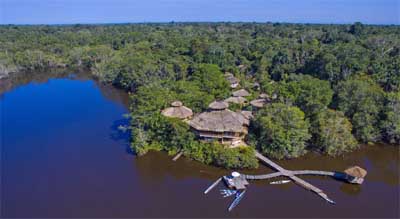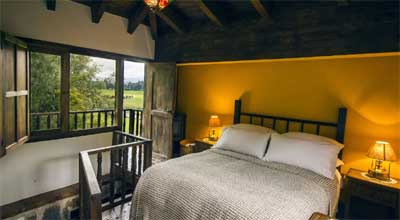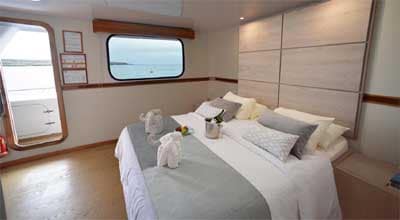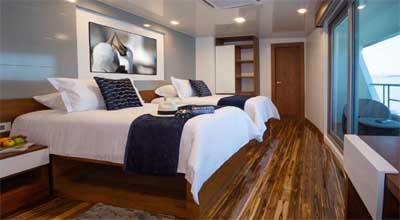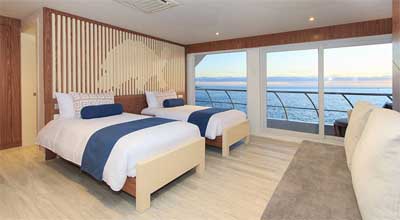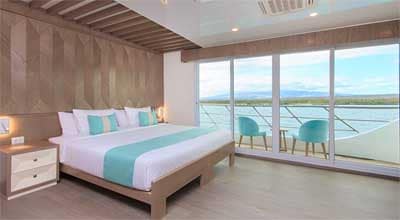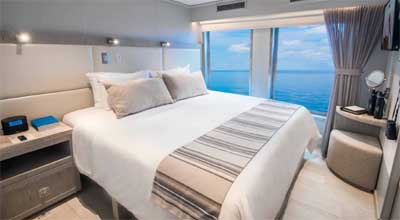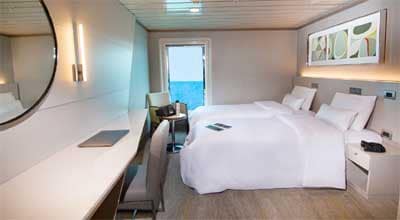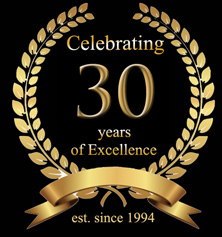PRIVATE LATIN AMERICA TOURS & LUXURY VACATIONS
Active Adventures. Luxury Holidays. Unforgettable Memories.
- Vacation Packages
- At a Glance
- Where to Stay
- Travel Info & Gallery
LUXURY SOUTH AMERICA TOURS – PERU, CHILE, ECUADOR & COLOMBIA
South America boasts some of the most amazing natural and cultural wonders on the planet. Just about everywhere you go, there is always a sense of intrigue, adventure and fun – from fascinating Incan ruins to breathtaking panoramas to exhilarating eco adventures. Each and every one of our private Latin America tours is meticulously crafted to infuse that perfect balance between luxury, adventure and relaxation so that you can enjoy your long-awaited vacation in the most immersive and personalized way possible. And since our Colombia, Ecuador, Chile and Peru tours are private, any of our South America vacations can be customized to suit your travel interests & requirements. Come and join us on your next adventure to Latin America!
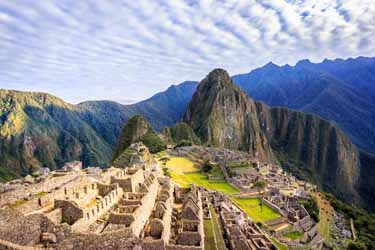
Spectacular Peru
A Luxury Tour of Peru’s Must Sees – Lima, Sacred Valley, Machu Picchu, Cuzco (9 days / 8 nights) Land Only Price from $5,185
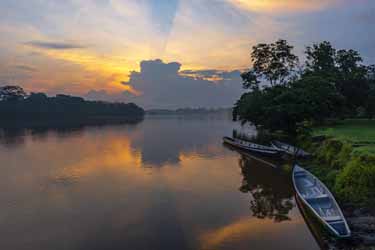
Majestic Peru
A Private and Active Tour of Peru – Lima, Amazon Jungles, Sacred Valley, Machu Picchu, Cuzco (12 days / 11 nights) Land Only Price From: $5,425
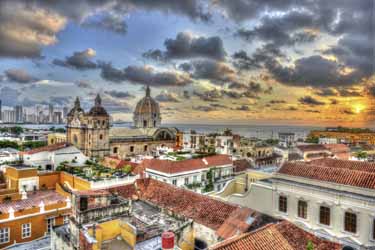
Colombia in Style
A Private Luxury Colombia Vacation – Bogota, Coffee Triangle, Medellin, Cartagena (13 days / 12 nights) Land Only Price From: $5,525
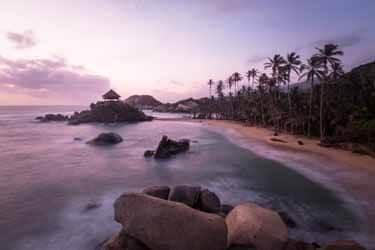
Unforgettable Colombia
An Active Colombia Tour of City, Mountains & Beaches – Bogota, Tayrona National Park, Minca, Cartagena, Islas Rosario (12 days / 11 nights) Land Only Price From: $4,575
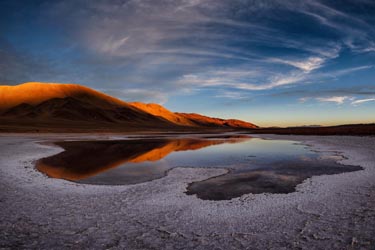
Majestic Chile – Lakes, Desert & Wine
A Scenic Chile Tour of Desert, Wine Country & Alpine Lakes – Santiago, San Pedro de Atacama, Colchagua, Pucon Lake District (12 days / 11 nights) Land Only Price From: $5,500
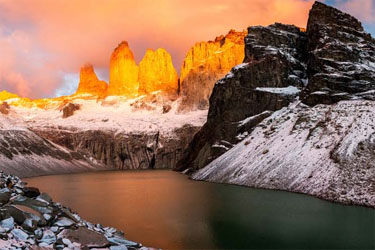
Spectacular Chile & Patagonia
A Private Tour of Chile’s Glaciers, Desert & Wine Country – Santiago, San Pedro de Atacama, Colchagua, Torres del Paine Patagonia (12 days / 11 nights) Land Only Price From: $8,575
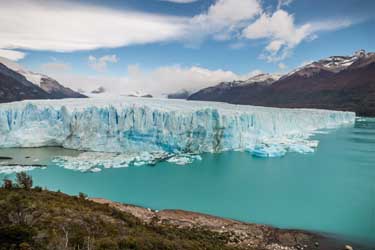
Patagonia Adventure
An inspiring tour of Chilean & Argentine Patagonia – Santiago, Torres del Paine, El Calafate, Buenos Aires (12 days / 11 nights) Land Only Price From: $9,375
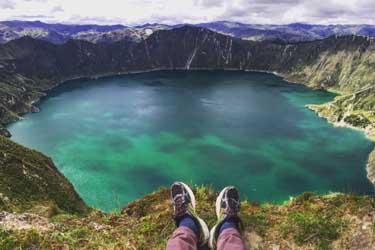
Undiscovered Ecuador
A Private Tour of Ecuador’s Mainland – Quito, Otavalo Lower Amazon, Cotopaxi & Quilotoa (11 days / 10 nights) Land Only Price from $5,075
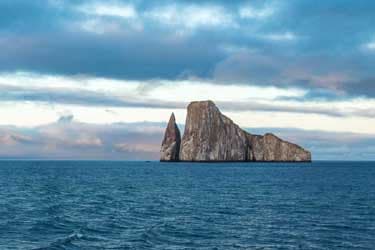
Galapagos by Cruise
Galapagos Islands by Cruise (5-7 nights) Cruise Only Price from $4,015
ABOUT PERU, CHILE, COLOMBIA, ECUADOR & THE GALAPAGOS
Latin America rewards the visitor with a plethora of tantalizing travel experiences that rival just about anywhere on the planet. Its rich and diverse cultural heritage encompasses civilizations dating back thousands of years – from the Pre-Colombian aboriginals to the great Incan empire to the European settlers in the 16th century. This all translates to fascinating cultures and traditions, dazzling architectures and warm friendly people, making South American a stone’s throw from its North American neighbor but a world far, far away.
For the nature lover, wildlife enthusiast, and the active traveler, Latin America is literally out-of-this-world. Its arsenal of scenic beauty wows the visitor with a kaleidoscope of Mother Nature at her rawest form. And there is no shortage of activities for those who want to get out and experience these natural wonders close up – from sandboarding in the Atacama Desert to ice-trekking atop a Patagonian glacier. River-tripping the Amazon Jungle to conquering the Ican trail in quest for Machu Picchu. Star gazing in a luxury tented camp to cruising the Galapagos on a wildlife expedition. Much of South America remains Earth as it was millions of years ago.
And finally, there is the food. As an integral part of the local culture, food remains the center of it all. Latin American cuisine combines a unique mix of cultural backgrounds of the indigenous peoples and influences from around the world. While there are some similarities in their cooking techniques, every Latin American country has its own distinctive flavors derived from their respective indigenous roots, local ingredients and innovative culinary artistry. The result is a tantalizing array of delicious foods with an explosion of flavors that leave foodies hungry for more. From sampling street food in Santiago’s Central Market to sipping a cup of freshly harvested Colombian coffee at one of Bogota’s roadside cafes to indulging at one of Lima’s award-winning fine dining establishments, a trip to South America guarantees an epicurean adventure that overloads the senses.
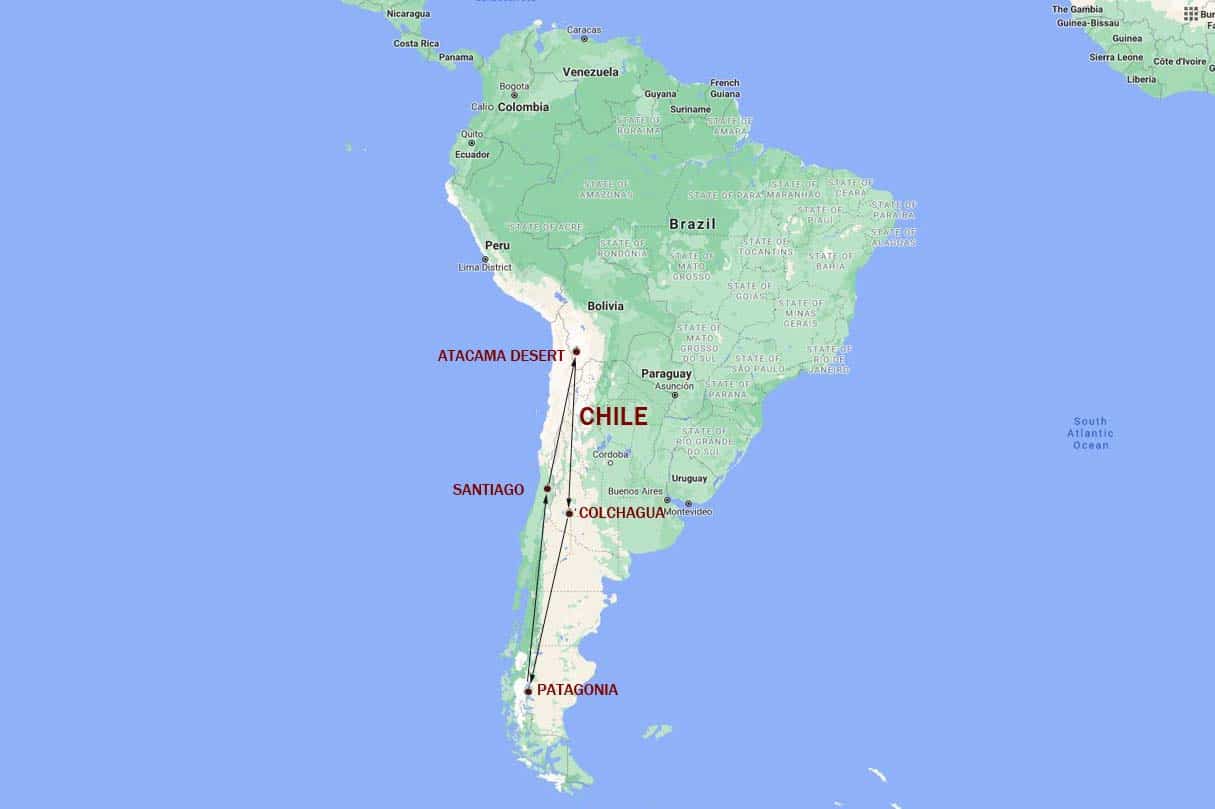
Our Top Picks – Active & Luxury Latin America Vacations

Spectacular Peru
A Luxury Tour of Peru’s Must Sees – Lima, Sacred Valley, Machu Picchu, Cuzco (9 days / 8 nights) Land Only Price from $5,185

Spectacular Chile & Patagonia
A Private Tour of Chile’s Glaciers, Desert & Wine Country – Santiago, San Pedro de Atacama, Colchagua, Torres del Paine Patagonia (12 days / 11 nights) Land Only Price From: $8,575

Unforgettable Colombia
An Active Colombia Tour of City, Mountains & Beaches – Bogota, Tayrona National Park, Minca, Cartagena, Islas Rosario (12 days / 11 nights) Land Only Price From: $4,575
ABOUT PERU
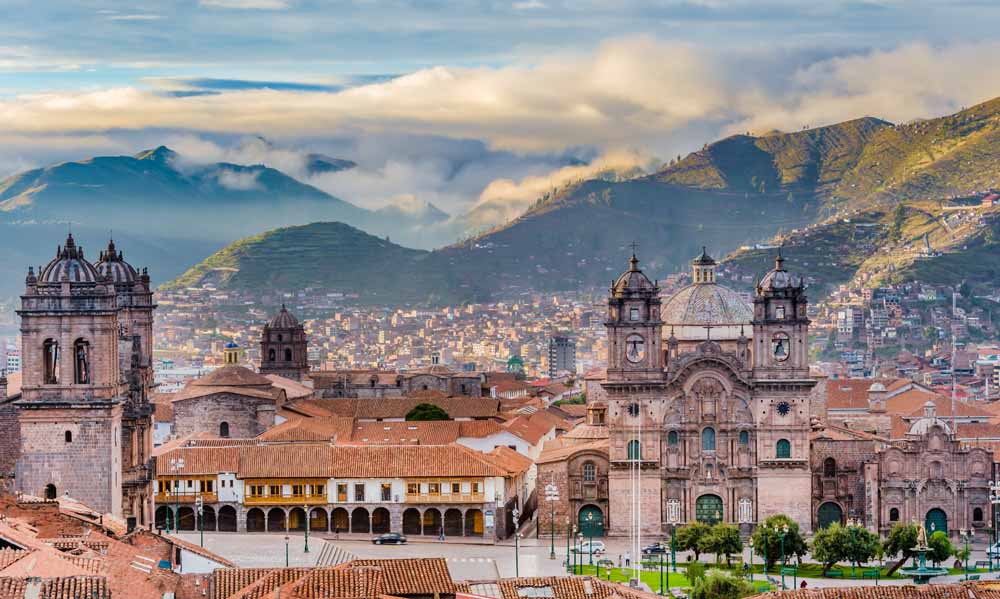
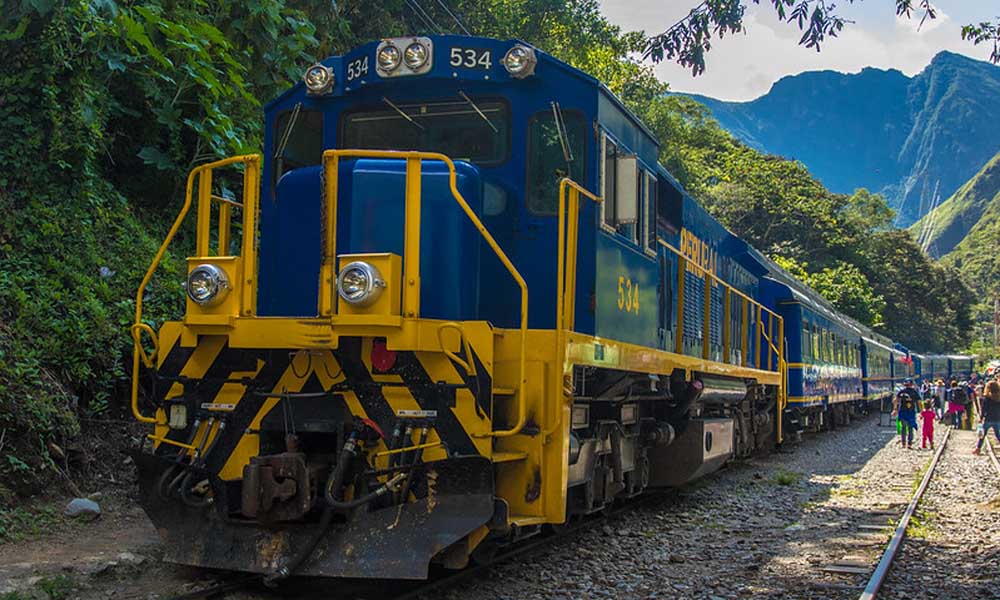
Very few places on Earth rival Peru’s plethora of breathtaking landscapes, stunning archaeological marvels, alluring culture and mouthwatering cuisine. Because of its rich heritage and biodiversity, Peru is heaven on earth for those seeking that perfect holiday experience with a harmonious balance of adventure, culture and relaxation.
Recognized as being one of the planet’s most biodiverse countries, Peru never ceases to amaze the nature lover. Home to 84 of the planet’s 117 life zones, Peru showcases the awesome work of Mother Nature – everything from snowcapped mountains to palm fringed beaches; virgin jungles to towering sand dunes; humbling glaciers to roaring rivers. Whether trekking through the amazon jungle or admiring the Andes from afar on board the Hiram Bingham train is your thing, Peru has offers something for the luxury traveler, adrenaline junkie and everyone in between.
Home to more than five thousand archaeological sites, Peru is simply heaven for the photographer and history buff. Famed for its awe-inspiring Machu Picchu, one of the greatest architectural marvels of mankind and deservingly on every avid traveler’s bucket list, Peru boasts an vast array of relics of past civilizations – from the ancient Pre-Colombian period to the remarkable Inca Empire to the more recent Spanish Colonial era. With impressive architectural marvels sprinkled throughout the Andean country from the modern metropolis of Lima all the way to the remote mountain ridge of Machu Picchu, each ruin showcases its civilization’s incredible ingenuity, refined artistry and religious beliefs, it’s hard not to be humbled by Peru’s mystical past.
Besides great sights, the people and culture of a given destination often become the highlight of any trip. No doubt Peru has a rich history and fascinating cultural roots dating back thousands of years, but what’s it like today compared to typical Latin American tourist hotspots like Mexico or Rio de Janeiro? Well, Peru is rich in culture, remnants of Pre-Colombian, Incan and Spanish way of life remains prominently ingrained in today’s Peruvian society – everything from language to costumes to religion. For those who relish local cultures and timeless traditions, Peru is a wonderland dotted with numerous small towns and villages that still carry on their indigenous roots. The local folks here still live simply in their modest homes, wear colorful handwoven clothing, make traditional arts and crafts by hand, go shopping at open air markets and practice age-old religious rituals. And if you’re lucky, you might just stumble upon a village fiesta where local communities participate in processions, local dance, traditional theatre and lots of eating and drinking.
Last and definitely not least, the Food. Peru has been recognized as one of the world’s best epicurean destinations in recent years. Because of its diverse climates and multi-cultural heritage, Peruvian cuisine boasts an explosion of flavors that fuses cooking methods and ingredients from the Icans, Spaniards, Chinese, even Japanese and African. Blessed by gamut of mother nature goodness, Peru’s 85 distinctive climates make food sources both plentiful and delicious. For example, there are nearly 3,000 varieties of potatoes and 55 different types of corn native to Peru alone while a wide range of seafood and meat varieties make Peruvian cuisine all the more flavorful. Further, with centuries of perfected farming methods, Peru’s agricultural products are almost entirely organic, something that has become a luxury good in today’s fast-paced world. It’s no wonder Peru is home to some of the world’s best restaurants.
Trek the Inca Trail to the mystical Machu Picchu, explore the jungles of the Amazon by boat, try sandboarding on the dunes of Colca Canyon, or simply eat your way through Cuzco and Lima. Whatever your vision of Peru, a visit here will go beyond the imagination.
For additional tourism information on Peru, please visit https://www.peru.travel/en/
Recommended PERU Tours
ABOUT CHILE
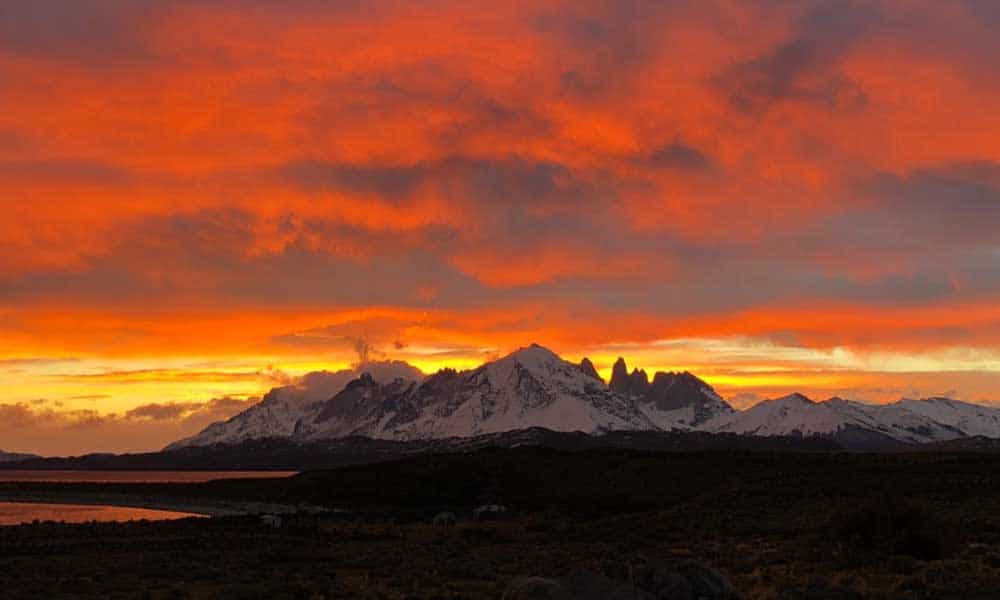
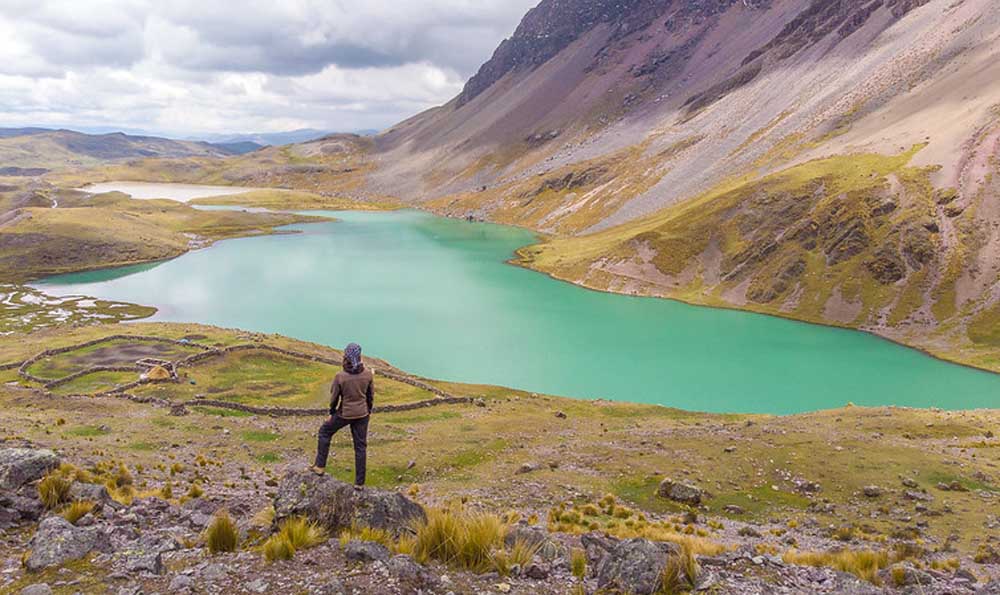
As the longest and thinnest country in the world, Chile is nestled between the Andes and the Pacific Ocean spanning over 2,600 miles. With territories in Polynesia and Antarctica, this a tri-continental nation boasts a vast arsenal of spectacular landscapes unlike anywhere on the planet. The visitor is rewarded with a glimpse of Mother Nature at her rawest from – from the driest place on Earth in the Atacama Desert to picture-perfect alpine lakes in Pucon, Patagonia’s awesome glaciers to Easter Island’s palm-fringed virgin beaches, towering mountains and active volcanos to roaring rivers and breathtaking waterfalls. Chile is simply nature’s wonderland unspoiled by mankind.
Chilean heritage dates back 10,000 years to the indigenous tribal people followed by the great Inca Empire and finally the Spanish colonial period. Its cultural roots are as diverse as its landscapes where considerable diversity exists between regions of the country – from the Aymara people in the northern highlands to the Mapuche tribes in the central and southern heartlands to the Rapa Nui of Polynesian descent on Easter Island. The result is an exotic array of artifacts, architecture, customs and traditions, dance and foods.
While Chiles sports a fabulous range of distinctive landscapes, it is important to note Chile is a big, sparsely populated country where famed attractions are sprinkled across the land. Due to the country’s unique, even harsh, topography, most travel between major cities require flying. And because there currently exists very limited point-to-point service, flight connections in Santiago are often required when traveling between the north and south. As we know your time on holiday is precious, our itineraries are crafted in such a way that we make everyday count. Nonetheless, flying, driving and even walking are often necessary to get from place to place, but rest assured you will be rewarded with some of the most spectacular sights on Earth.
So why travel Chile? Chile is a land far far away from the modernity of our daily lives. It attracts the nature lover and adventure enthusiast alike boasting a countless range of uncommon active options: glacier trekking, river rafting, sand boarding, alpine skiing, volcano trekking and ziplining are just a few to come to mind. And for those who don’t fall into the adrenaline junkie category, there’re plenty of softer, yet still fascinating adventures to be had – everything from admiring the sunset over Atacama’s extraterrestrial-like Moon Valley to witnessing giant glaciers crashing into the sea, relaxing on the shores of the Chilean Lake District to observing penguins at play in Isla Magdalena, eating your way through Santiago’s Central Market to sampling the finest Chilean wine in the Colchagua, Chile delights all.
For additional tourism information on Chile, please visit https://www.chile.travel/en/
ABOUT ECUADOR
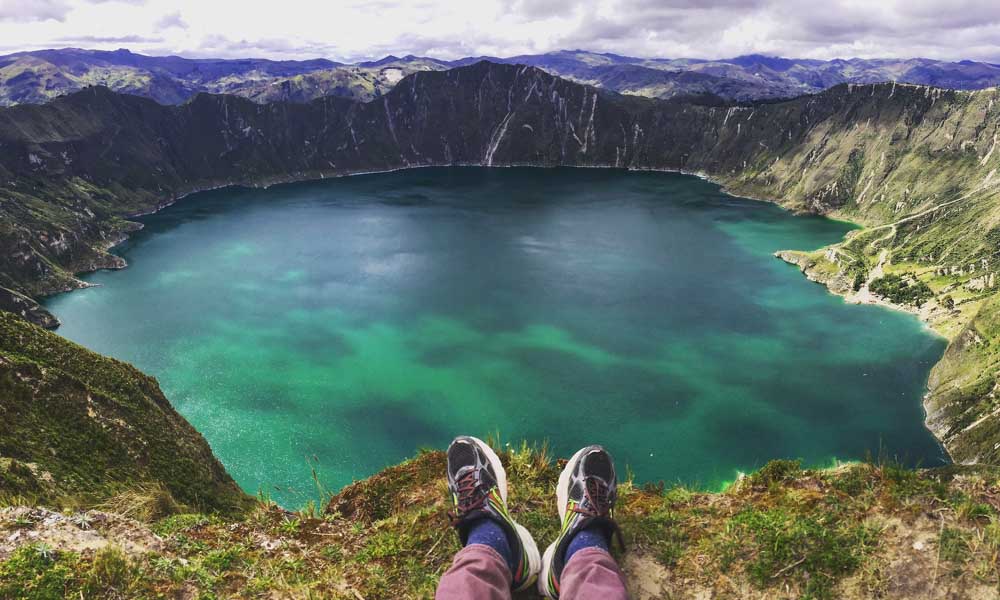
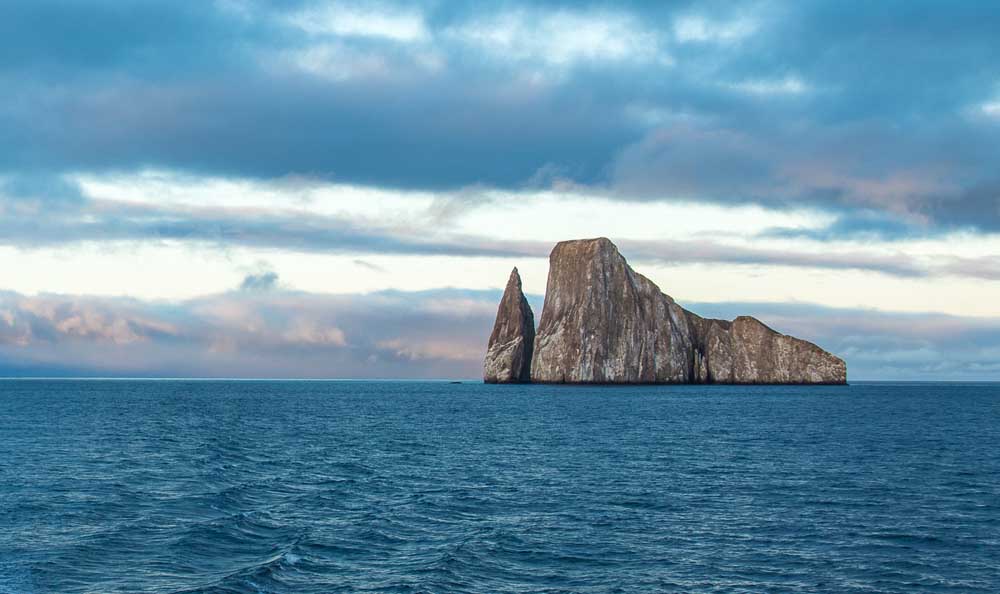
While Ecuador is synonymous with the famed Galapagos Islands, just like Angkor Wat to Cambodia or the Great Wall to China, few put Ecuador’s mainland on the tourist map. And that’s a good thing. Outside of the Galapagos, Ecuador is literally a hidden gem that remains largely undiscovered, escaping the effects of mass tourism.
Ecuador may be small, but it rivals just about any large country when it comes to natural wonders, biodiversity and culture. Occupying just a tiny corner of the South American continent, little but mighty Ecuador boasts four distinct worlds in one magical country: the lush Amazon Rainforest, the majestic snowy Andes Mountains, the alluring Pacific Coast and the revered Galapagos Archipelago. Because of its varied and dramatic landscapes, Ecuador is blessed with numerous (47 to be exact!) giant volcanoes, mystical cloud and rain forests, the untamed Amazon jungle, beautifully preserved Spanish-colonial era cities, quaint coastal towns and fishing villages, and a kaleidoscope of amazing wildlife as unique as the ecosystem in which they thrive.
For the avid traveler, cultural experiences are a key part of any trip – mingling with the local people, sampling native cuisines, learning about ancient rituals, strolling open air markets, partying at festivals big and small, and so on. If these sound good to you, look no further. Ecuador as culturally diverse as its landscape. And like much of South America, Ecuadorian culture blends the influences of Spanish colonialism with traditions of pre-Columbian indigenous people dating as far back as 10,000 B.C. The result is a plethora of tantalizing foods, timeless traditions, warm friendly people and electrifying festivals. Our hand-crafted Ecuador vacations offer the traveler ample opportunities to immerse in the local culture as well as interacting with the local people in an authentic and meaningful way through village visits and community projects. Today, there remains 14 indigenous nationalities dotted across all corners of the country, making Ecuador a fascinating place to experience something totally different.
For the nature lover, wildlife enthusiast, and adrenaline junkie, Ecuador is simply paradise. The animal lover will relish stepping foot on a country with the highest biodiversity per square meter in South America boasting over 350 species of mammals, 477 species of reptiles and over 1,600 bird species (5th most in the world). This translates to wildlife sightings just about anywhere you go in Ecuador – on land, in the air and underwater – without the masses! Here, you’ll have the opportunity to get up close and personal with uncommon wildlife everything from adorable penguins in the Galapagos to the mighty Andean Condor in the Andes to pink river dolphins in the Amazon, not from the window of a bus but in the animals’ natural habitat with little to no human intervention. And as the adventure capital of South America, you can do it all in Ecuador – from invigorating volcano treks to adrenaline pumping extreme sports like whitewater rafting on the Napo river to suspenseful night safaris in the Amazon jungle. For everyone else, Ecuador boasts plenty of sights, sounds and tastes that make for an unforgettable, multi-faceted travel experience that is both unique and stimulating.
So why Ecuador? For those seeking a travel destination that is undiscovered, affordable (well, except for the Galapagos), has a ton of history and culture, loaded with out-of-this-world natural wonders, wildlife and faunas, abundant with warm friendly people, dotted with beautiful colonial era cities, and boasts countless soft adventure options – all within a short drive or flight way? Ecuador might just be that perfect destination for you. But don’t wait too long, the word on Ecuador is already out!
For additional tourism information on Ecuador, please visit https://www.ecuador.travel/en/
Recommended Tours
ABOUT COLOMBIA
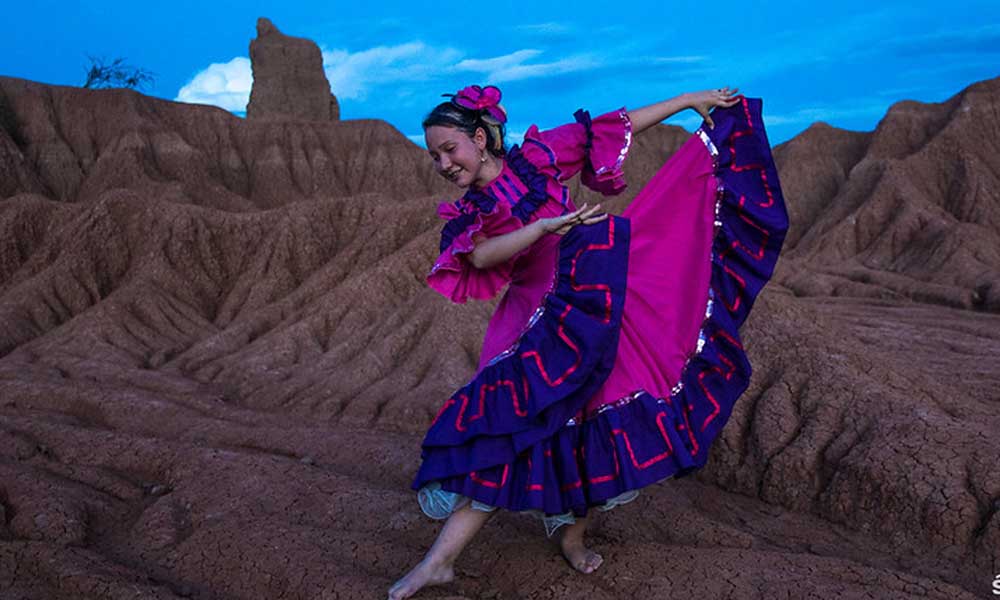
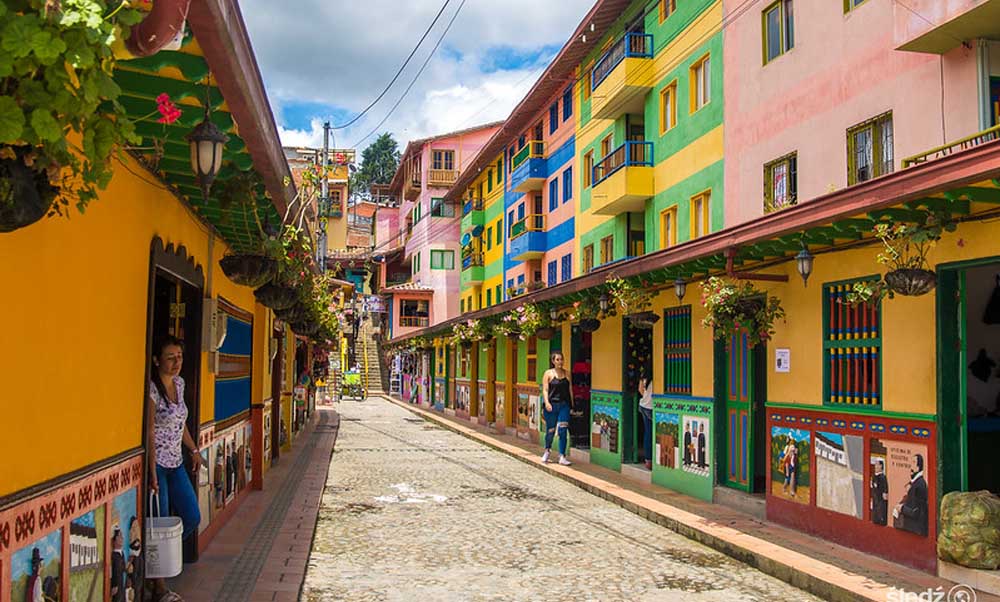
Recommended Tours
Unbeknownst to most, Colombia is now one of the hottest tourist destinations in the Western Hemisphere. In fact, the New York Times ranked Colombia #2 on its “52 Places to Go List” in 2018 and was chosen as the number one trending destination for tourism in 2020 in a ranking by the United States Tour Operators Association (USTOA). Why? Read on…
Having borne the stigma of being a dangerous destination for decades, Colombia has gone through a vast and rapid transformation since the early 2000s. Today, Colombia is considered one of the safest countries in Latin America. And because of its checkered past, Colombia remains largely undiscovered, spared from the adverse effects of over-tourism.
Colombia offers some of the most rewarding cultural experiences in the Americas. Its diverse heritage, warm friendly people, and dazzling street art make Colombia a fascinating place to catch a glimpse of the country’s past, present and future. For the nature lover, Colombia is simply heaven. Designated as a “Megadiverse” country, it is the second most biodiverse country on the planet that boasts a plethora of topography spanning rainforests, deserts, glaciers and tropical islands. Active travelers can choose from an array of uncommon adventures everything from the depths of the mystic Amazon all the way to the waves that break on the foothills of the imposing Sierra Nevada.
For the history and architecture buff, there is no shortage of remarkable relics and ruins near and far across a multitude of civilizations dating back 5,000 B.C. From the sacred ruins of the Lost City to the stunning Las Lajas Sanctuary Roman Catholic Church, Colombia’s vast history and architectural marvels delight even the most seasoned traveler. Finally, there is the beach. Few people associate Colombia with a beach escape. But unbeknownst to most, Colombia is blessed with over two thousand miles of spectacular coastline on both the Pacific Ocean and the Caribbean Sea, and home to over 30 beautiful Caribbean islands. Its plethora of virgin shores and palm fringed beaches make for a perfect way to discover the nature and cultural charm of this off-the-tourist-path gem.
With its myriad of cultural, adventure and relaxation options, Colombia is a multi-faceted destination suitable for just about anyone for any occasion – from blissful honeymoons to unforgettable family holidays to awe-inspiring active adventures. Come to Colombia and discover the undiscovered – but don’t wait too long. This window of opportunity won’t last forever!
For additional tourism information on Colombia, please visit https://www.colombia.travel/en/
OUR HOTELS
As a leader in luxury travel for over two decades, we understand hotels are an integral part of any vacation. While exploring South America’s alluring sights and sounds, Explorient guests can rest assured they will end the day in comfort and style. Our team at Explorient takes enormous pride in choosing best-in-class accommodations that maximize your trip experience.
Our Peru, Ecuador, Colombia & Chile tour packages feature 4 and 5-star accommodations that are as unique as the destinations themselves. Our hotels range from charming historic hotels to back-to-nature jungle lodges to top-of-the-line luxury resorts, and everything in between. No matter your choice, you can be sure your “home away from home” will be of the highest quality, conveniently located, and of top-notch service. If you don’t take just our word for it, here’s our portfolio of hotels featured across our Latin America vacations.
PERU HOTELS
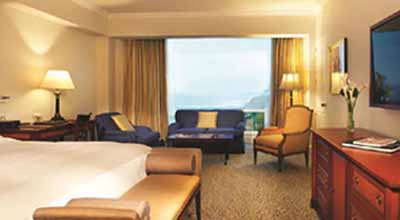
LIMA – Belmond miraflores park
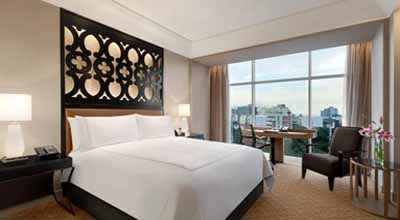
LIMA – hilton miraflores
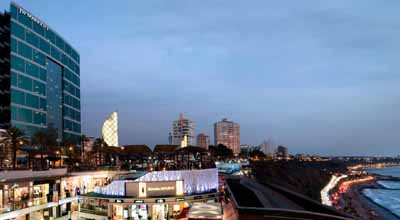
LIMA – JW Marriott
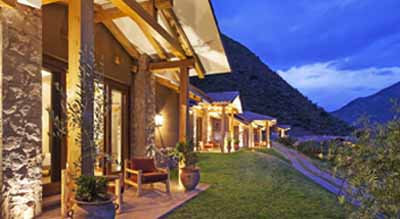
Sacred Valley – inkaterra hacienda
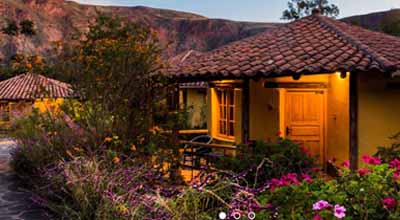
Sacred Valley – hotel sol y luna
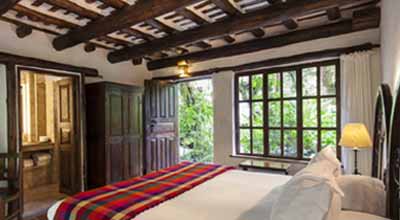
inkaterra machu picchu pueblo
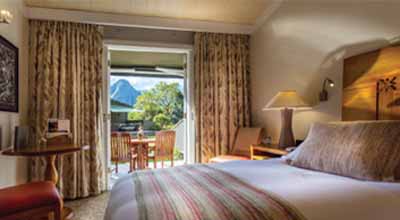
machu picchu – belmond sanctuary lodge
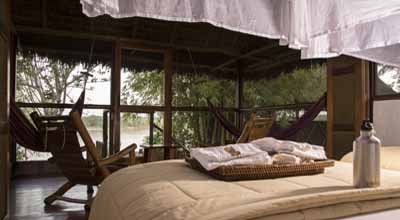
inkaterra reserva amazonica
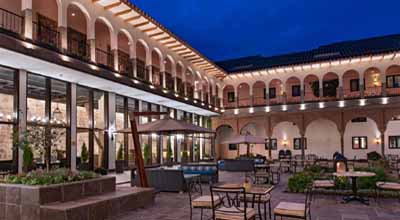
cuzco – jw marriott
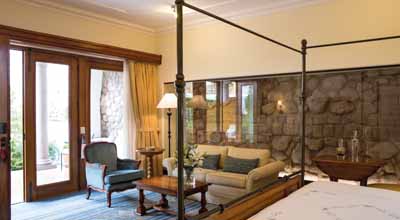
cuzco – Belmond Palacio nazarenas
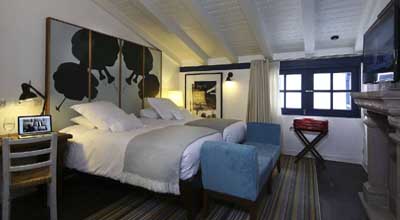
cuzco – hotel el mercado
COLOMBIA HOTELS
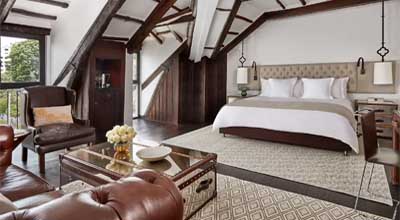
Bogota – four seasons casa medina
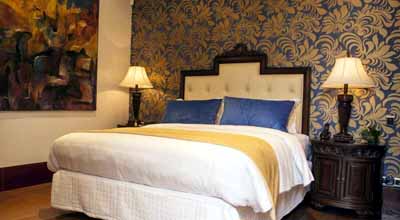
bogota – the orchids hotel
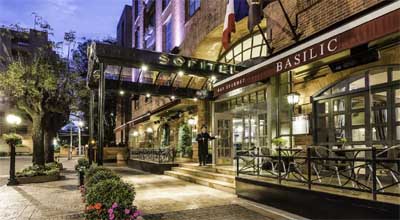
bogota – sofitel victoria regia
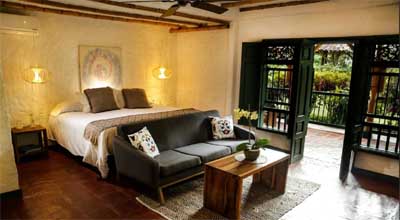
armenia – hacienda bambusa
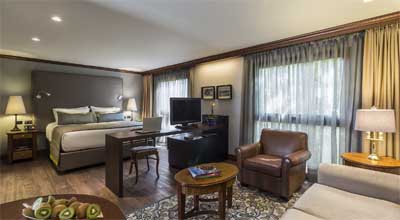
medellin – hotel park 10
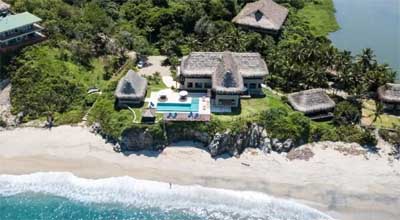
tayrona – casa los naranjos
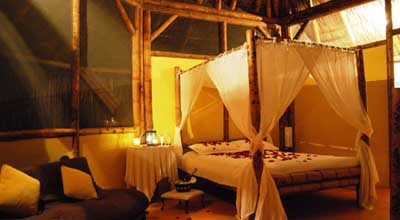
MINCA – ECOHABS
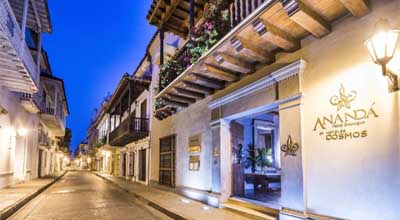
CARTAGENA – ANANDA BOUTIQUE HOTEL
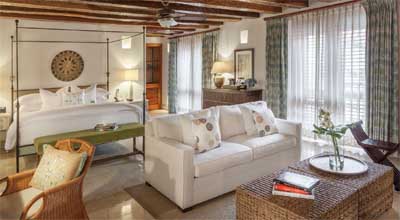
cartagena – casa san agustin
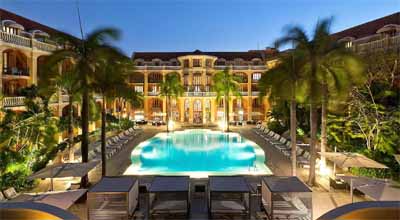
cartagena – sofitel santa clara
CHILE HOTELS

Santiago – UGO Hotel
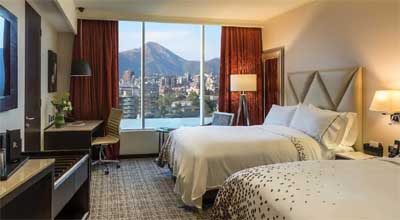
Renaissance santiago
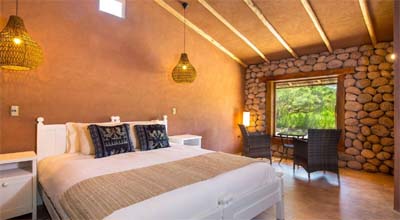
Atacama – Hotel Altiplanico
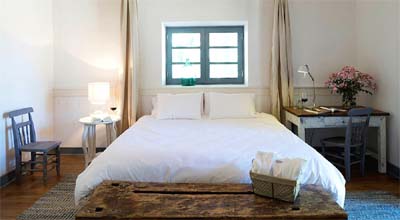
Colchagua – hotel noi blend
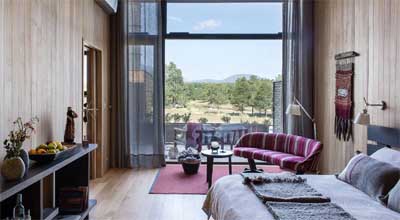
pucon – beyond vira vira
ECUADOR HOTELS & GALAPAGOS CRUISES
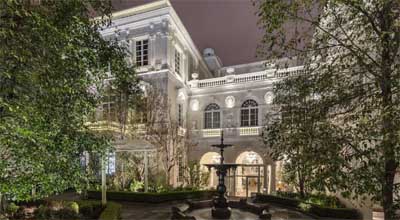
Quito – casa gangotena hotel
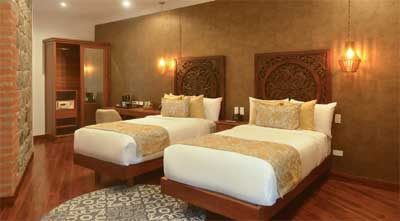
Hotel otavalo
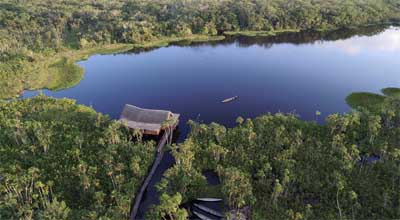
lower amazon – sacha lodge
Time Zone
GMT-5 (ET + 0)
Climate
View Chart
International Gateways
Lima (LIM) / Cuzco (CUZ)
PERU VIRTUAL TOUR
PRACTICAL TIPS
- Passport & Visa
- Climate & Clothing
- Holidays
- Airport Taxes
- Baggage
- Communications
- Currency
- Customs Regulations
- Electricity
- Food & Water
- Health Matters
- Tipping
- Transportation
- What to Pack
Tourist visas are NOT required to enter Peru for U.S. and Canada Passport Holders.
It is essential when entering Peru to present a valid passport with a minimum validity of six months from the date of entry into the country. Citizens of Argentina, Brazil, Paraguay, Uruguay, Ecuador, Colombia, Bolivia and Chile can enter with their national ID document.
Peru is an easy country to enter. People from most countries in the Americas and Western Europe do not need a tourist visa to enter Peru. The maximum length of stay that the authorities grant to tourists is 183 days, which cannot be extended. If you wish to stay longer for other reasons, such as business, studying or working, you need to request the relevant visa at a Peruvian consulate in your own country. If you need further details regarding entry requirements, click here to locate your nearest the Peruvian Consulate/Embassy.
Peru is located in the Southern Hemisphere and has the following three seasons. Moreover, given the country’s vast topography, weather patterns greatly vary by region as listed below:
- Summer: Dec. 22 – Mar. 21 (the rainy season in the highlands and jungle).
- Autumn: Mar. 22 – Jun. 21 Winter: Jun. 22 – Sept. 22
- Spring: Sept. 23 – Dec. 21
Coastal Region
From Tacna to Piura: warm temperate climate, moderate but with high humidity and thick mist in Winter. In Summer there is very little mist and the temperature reaches 30 ° C.
From Piura to Tumbes: warm and very dry. Heavy rain between December and April, particularly on higher ground. Average temperature: 24 ° C.
Highlands
The highlands have two seasons: Summer (April – Oct.), when the days are sunny, the nights cold and there is little rain (the ideal time to visit); and Winter (Nov. – March), when rain is frequent and heavy. During the day the temperature can reach 24 ° C and at night fall to -3 ° C.
The jungle
The jungle, like the highlands, has two well-defined seasons: the rainy season (Nov. – March), with abundant rainfall; and the relatively dry seasons (April – Oct.), which is the ideal time to visit. Humidity is very high throughout the year. Occasional “cold snaps” or “surazos” occur between May and August, when the temperature falls to 8 ° C – 12 ° C.
January 1 – New Year’s Day (Año Nuevo)
March/April – Holy Week / Easter Holidays
May 1 – Labor Day (Día del Trabajador)
June 29 – St. Peter and St. Paul Day (Día de San Pedro y San Pablo)
July 28 and 29 – Independence Day (Día de la Independencia/Fiestas Patrias)
August 30 – St. Rose of Lima Day (Día de Santa Rosa de Lima)
October 8 – Battle of Angamos (Combate de Angamos)
November 1 – All Saints’ Day (Día de Todos los Santos)
December 8 – Immaculate Conception (Inmaculada Concepción)
December 25 – Christmas Day
As of January 2011, airport departure taxes for both domestic and international flights are included in your air tickets.
Most of Peru’s domestic airlines allow at least one item of carry-on and one checked bag up to 50 lbs free of charge. Excess luggage fees will be charged if you check more than the stated allowances, and these charges are your responsibility.
Please note, however, baggage policies are subject to change by the carrier without notice. Be sure to check your flight tickets on baggage allowance/restrictions prior to departure.
International Direct Dialing at your hotel is available to and from Peru. The use of mobile phones is widespread.
Generally, Peru has good Internet connections, with cyber cafés even in remote areas, and Wifi is available at hotels included in your Peru tour package.
Postal service in Peru is reasonably efficient though it takes at least 10 days or more for letters to reach North America. Most hotels provide postal services for documents and small packages.
The official currency of Peru is the Sol (S /). Banknotes have denominations of 10, 20, 50, 100 or 200 soles. Coins come in values of 1, 2 and 5 soles, as well as 10, 20 and 50 cents.
US dollars are accepted in many stores, restaurants, hotels and service stations. Foreign currency can be exchanged at banks or exchange offices. There are also street “moneychangers” who change money, but the transaction cannot be guaranteed. The normal opening hours for bureaux de change are Monday to Friday, 9am to 6pm, and 9am to midday on Saturdays.
You can find ATMs in almost all cities in the country, and most are connected to the Plus (Visa), Cirrus (MasterCard / Maestro), American Express and other networks. You can take cash out in US dollars or soles, but the exchange rate is often higher. Credit cards are also widely accepted throughout Peru.
According to related laws and regulations, the luggage of inbound and outbound passengers must come under customs supervision and control. Passengers should make accurate declarations to customs officials regarding the luggage they carry into or out of the territory.
Voltage in Peru is 220 volts although most portable electronic devices such as phones, laptops and cameras do not require an electrical converter. Similar to the U.S., most plugs in Peru are the two-pronged flat type. However, if you have a device with a three prong plug (such as some laptop computers), an adapter may be required.
Nearly all hotels featured in your Peru tour package provide hair dryers and amenities expected in an international standard 4 or 5-star hotel.
Tap water in Peru is NOT safe to drink. Travelers are advised to drink only bottled water, which can be very easily purchased locally. Hotels featured in our Peru tours will include bottled water daily.
COVID-19 Restrictions: As of October 2020, there are no travel restrictions for entering Peru. Passengers must show proof of a negative COVID-19 test result dated within 72 hours of departure. Arriving travelers can expect health screenings in airports and at customs checkpoints. There are no quarantine requirements at this time but all travel restrictions and regulations are subject to change by government authorities.
Health conditions in Peru are good, especially in the cities. In recent years, the range of health services has increased and become more modern. Hospitals and clinics provide proper care, but we recommend taking out travel insurance.
There are no compulsory vaccinations for entering Peru (new COVID-19 requirements may apply). If you are thinking of visiting the Amazon region of the country, the Ministry of Health recommends that you are vaccinated against yellow fever. For more information about vaccinations, click here .
Though not required for entry, here are some recommended vaccinations as precautionary measures.
Hepatitis A: Recommended for: all travelers.
Hepatitis B: Recommended for travelers who will have prolonged contact with the local population.
Yellow Fever *: Recommended for travelers to jungle areas below 8,200 feet.
Destinations for which it is recommended: Amazonas, Loreto, San Martín, Ucayali, Junín and Madre de Dios.
* To be effective, the yellow fever vaccination must be given at least 10 days before traveling.
Tipping is a customary practice in Peru at tourist establishments. From guides to restaurant servers to bellmen.
Most restaurant and bar bills include a 10% gratuity. It’s customary to add an extra 10% if the service is satisfactory. Most Peruvians only tip one or two Soles at small local restaurants that do not add a tip to the bill.
Taxis do not expect tips. Fares are negotiated prior to initiating the trip. Hotel porters and bell boys expect a tip of $ 1 per bag.
For transfers and tours that are part of your Peru vacation package, we recommend tipping between $12-$15 per person per full day of service. This amount is to be split between the guide and driver at a 2:1 ratio. You may, of course, adjust this amount up or down depending on the level of service you received.
All ground transportation is included in our Peru tour packages with the vast majority of which are provided by private vehicle. In each city, a local English-speaking guide will meet you upon arrival and handle all arrangements, including sightseeing commentary, while you are in that city.
The country’s biggest cities have airports for domestic flights. Peru’s main roads are in very good condition, patrolled by highway police and with emergency services quickly available. There are many bus companies that operate routes to almost everywhere in the country, with services varying by level of comfort, speed and price. Most cities have bus terminals.
Formal transport services include the Metropolitano (a rapid buses service) and Lima Metro (electric train). Outside the capital, (provincial cities), “combis” are the most popular means of transport. They run on defined routes but there are no formal stops, they stop on any street corner.
Taxis in Peru do not have meters. If you flag one down in the street you negotiate the price on the spot. It is much better if you use secure taxi companies (phoning for a cab or using a mobile app). Finally, Uber currently operates in Peru’s larger cities such as Lima and Cuzco, and is a convenient way to get around while exploring on your own.
Tourist trains The most important tourist rail routes are: Ollantaytambo-Machu Picchu. Service provided by Peru Rail and Inca Rail. Cusco) -Machu Picchu (Aguas Calientes or Machu Picchu Pueblo). Sole operator: Peru Rail. Puno-Cusco. Operated by Peru Rail. Lima-Huancayo. Ferrocarril Central Andino operates the route but only on certain dates (July, August, October and November).
What you wear in Peru depends on when you’re visiting, where you’re going and what you’ll be doing. The rainy season in Peru is from November to April, and the dry season is from May to October. Due to Peru vast topography, we can be at sea level one day, at 12,000 feet the next, and everything in between. Please consult with your Peru travel advisor on what to expect weather-wise on your trip.
In general, here are some common items to pack:
- Raincoat or poncho, umbrella
- Comfortable walking & hiking shoes/boots
- Lightweight clothing for layering
- Sweater and light jacket
- Sun screen & sunglasses
- Warm hat
- Electrical adapter
- Personal medications
- Acetazolamide (for altitude sickness)
- Your electronic devices such as mobile phone, camera, laptop, etc.
Time Zone
GMT-3 (ET + 2)
Climate
View Chart
International Gateways
Santiago (SCL)
PRACTICAL TIPS
- Passport & Visa
- Climate & Clothing
- Holidays
- Airport Taxes
- Baggage
- Communications
- Currency
- Customs Regulations
- Electricity
- Food & Water
- Health Matters
- Tipping
- Transportation
- What to Pack
Citizens from South America, the European Union, the USA, Canada and Australia do not need tourist visas. However, some countries must pay a tax in cash (reciprocity tax) upon arriving at the airport in Chile.
To enter Chile, you have to present your identification documents such as ID card or passport. And, depending on your country of origin, a stamped visa.
In Chile there are places that have not seen a drop of rain in decades, while there are others where the rain brings out the green in the millennial forests.
This diversity captivates and surprises its visitors. Because, as a consequence of its geography, Chile has all the climates of the planet and the four seasons are well differentiated. The warmest season is between October and April and the coldest, from May to September.
The temperature drops down as you travel south. In the north, the heat of the day remains during the day while the nights are quite cold. The central area has more of a Mediterranean climate and the south has lower temperatures and recurring rainfall throughout the year.
So when is the best time to go? Well, it depends on where you’re headed. As October to March/April are the warmest and most accessible months for visitors heading to Patagonia. The winter months (May – September ) are very cold so it’s best to avoid traveling to Patagonia during this time.
The northern part of the country may be visited year round. Santiago is a year round destination as is Atacama. In Atacama, day time temperatures are fairly constant year round though there is a big variance in temperature during the day (low/mid 20s C) and at night (freezing or below).
In the Lakes District, October to April are the drier, warmer months with temperatures ranging from around 5C – 10C at night to the 20s during the day. During the cooler months (May – September) tend to be rainy with day time temperatures in the low teens and nighttime hover slightly above freezing.
When you organize your trip to Chile you must keep in mind the holidays or days dedicated to important celebrations.
A large part of the Chilean population uses the holidays to travel between the regions of the country. The most popular are Easter, Christmas, New Year´s and the Independence celebrations on September 18th and 19th when we commemorate the independence of the country.
For reference, here are Chile’s major holidays for 2021:
Jan. 1 – New Year’s Day
Late March / Early April – Holy Week (Easter Holidays)
May 1 – Labour Day
May 21 – Battle of Iquique
Sep. 19 – Day of the Glories of the Army
Oct. 12 – Day of the Races
Oct. 31 – National Day of the Evangelical & Protestant Churches
Nov. 1 – All Saints’ Day
Dec. 8 – Feast of the Immaculate Conception
Dec. 25 – Christmas Day
Airport departure taxes for both domestic and international flights are included in your air tickets.
LATAM is the main carrier that operates routes within Chile. Baggage allowance for checked bags will depend on the fare type with many of which requiring bag fees. Please refer to LATAM’s baggage policy page for details. Once your domestic air tickets have been purchased, our travel special can provide additional information on baggage allowances, fees, etc.
International Direct Dialing at your hotel is available to and from Chile. The use of mobile phones is widespread. SIM cards are a good way to stay connected.
Generally, Chile has good Internet connections, with cyber cafés even in remote areas, and Wifi is available at hotels included in your Chile tour package.
Postal service in Chile is reasonably efficient though it can take up to 2 weeks or more for letters to reach North America. Most hotels provide postal services for documents and small packages. For urgent documents or parcels, we recommend using private courier service such as DHL and UPS.
The Chilean currency is the Peso, with coins equal to 1, 5, 10, 50, 100 and 500 pesos and bills of 1,000, 2,000, 5,000, 10,000 and 20,000 pesos. As of November 2020, the currency exchange rate is 1 USD = ~750 Pesos.
In the many cities of the country it is relatively easy to find ATMs that provide local currency. At the same time, most of the established stores allow paying with international bank cards.
Although some shops in Chile accept Dollars and Euros, it’s better to get Chilean Pesos always in official currency exchange offices as the exchange rate will be better.
While credit cards are widely accepted throughout Chile, some merchants will add a surcharge of around 3% for credit card purchases.
According to related laws and regulations, the luggage of inbound and outbound passengers must come under customs supervision and control. Passengers should make accurate declarations to customs officials regarding the luggage they carry into or out of the territory.
If you’re bringing animal or vegetable products, upon entering you must declare them to the Agriculture and Livestock Service (Servicio Agricola y Ganadero – SAG); in this way, you’ll be contributing to protecting the varied flora and fauna of the country.
Voltage in Chile is 220 volts although most portable electronic devices such as phones, laptops and cameras do not require an electrical converter. However, sockets in Chile accept 2 or 3 prong round plugs (types C and L) which are different than those in the U.S. An adpater kit will be required for your portable devices.
Nearly all hotels featured in your Chile tour package provide hair dryers and amenities expected in an international standard 4 or 5-star hotel.
Tap water in Chile is considered safe to drink. However, due to its high mineral content, doing so can cause upset stomach for foreign visitors. As such, we recommend that travelers drink only bottled water, which can be very easily purchased locally.
COVID-19 Restrictions: Chile re-opens its borders in late November 2020. There are no travel restrictions for entering Peru. Passengers must show proof of a negative COVID-19 test result dated within 72 hours of departure as well as completing a health declaration form. Arriving travelers can expect health screenings in airports and at customs checkpoints. A 14-day quarantine will be imposed if a negative PCR COVID test is not presented. Please note all travel restrictions and regulations are subject to change by government authorities.
There are no compulsory vaccinations for entering Peru (new COVID-19 requirements may apply). If you are thinking of visiting the Amazon region of the country, the Ministry of Health recommends that you are vaccinated against yellow fever.
Though not required for entry, here are some recommended vaccinations as precautionary measures.
Hepatitis A: Recommended for all travelers.
Hepatitis B: Recommended for travelers who will have prolonged contact with the local population.
Yellow Fever *: Recommended for travelers to jungle areas below 8,200 feet.
Typhoid: Recommended for some travelers to safeguard against contaminated food or water in Chile. CDC recommends this vaccine for most travelers, especially if you are staying with friends or relatives, visiting smaller cities or rural areas, or if you are an adventurous eater.
* To be effective, the yellow fever vaccination must be given at least 10 days before traveling.
Tipping is a customary practice in Chile at tourist establishments. From guides to restaurant servers to bellmen.
Some restaurant and bar bills include a 10% gratuity. It’s customary to add an extra 5% for the server if the service is satisfactory. If service charge is not included in your food bill, a 10-15% tip is appreciated.
Taxis do not expect tips. Fares are negotiated prior to initiating the trip. Hotel porters and bell boys expect a tip of $ 1 per bag.
For transfers and tours that are part of your Chile vacation package, we recommend tipping between $12-$15 per person per full day of service. This amount is to be split between the guide and driver at a 2:1 ratio. You may, of course, adjust this amount up or down depending on the level of service you received.
All ground transportation is included in our Chile tour packages with the vast majority of which are provided by private vehicle. In each city, a local English-speaking guide will meet you upon arrival and handle all arrangements, including sightseeing commentary, while you are in that city.
Due to the country’s unique, even harsh, topography, most travels between major cities require flying. And because there currently exists very limited point-to-point service, flight connections in Santiago are often required when traveling between the north and south.
Long distance buses operated by several bus companies are available for traveling between cities within and beyond Chile. These buses are both comfortable and economical. If you booked your Chile adventure with us, your transportation will be provided by flight, private or semi-private vehicles for greater comfort and convenience.
Ferries can be used for getting around in the southern part of Chile in the Patagonia region. A network of privately run ferries operates through the fjords, inlets and channels of the archipelago. There is also a scenic ferry ride between Puerto Montt and Chacabuco, and between Puerto Montt to Puerto Natales.
Taxis are normally black with a yellow roof and are metered. Please be sure the meter is turned on to avoid being overcharged. Uber is said to be available in some areas of Chile but this is work in progress.
What you wear in Chile depends on when you’re visiting, where you’re going and what you’ll be doing. Due to Chile’s vast topography, you can on a desert one day or on glaciers the next, and everything in between. Please consult with your Chile travel advisor on what to expect weather-wise on your trip.
In general, here are some common items to pack:
- Adapter kit for portable electronics
- Raincoat or poncho, umbrella when visiting the Lakes District
- Comfortable walking & hiking shoes/boots
- Warm clothing/winter wear especially when traveling to Patagonia and to high altitude destinations
- Light-weight clothing for layering
- Sun screen & sunglasses
- Personal medications
- Acetazolamide (for altitude sickness)
- Your electronic devices such as mobile phone, camera, laptop, etc.
Time Zone
GMT-5 (ET + 0)
Climate
View Chart
International Gateways
Bogota (BOG) / Cartagena (CTG)
PRACTICAL TIPS
- Passport & Visa
- Climate & Clothing
- Holidays
- Airport Taxes
- Baggage
- Communications
- Currency
- Customs Regulations
- Electricity
- Food & Water
- Health Matters
- Tipping
- Transportation
- What to Pack
U.S. and Canada citizens do not need a Colombian visa for a tourist or business stay of 90 days or less. Before the visa expires, you may request an extension of up to 90 days from the Colombian immigration authority. Citizens of other certain countries need to present a tourist visa to gain entry. These can be processed at the Colombian embassies and consulates abroad. Check countries requiring visas HERE.
Because of Colombia’s close proximity to the Equator, its climate is generally tropical and isothermal (without any real change of seasons). Temperatures vary little throughout the year. There are just the dry seasons (from December to January and July to August) and the rainy seasons (from April to May and October to November) in Colombia. However, this doesn’t mean that the whole country gets the same weather. In fact, the topographical diversity of Colombia provides a huge variety of landscapes, biodiversity and thermal floors. Depeding on where you go and when, here
Warm climates
These are regions where temperatures are above 24 °C, such as the Pacific, where visitors can enjoy humpback whale sightings; San Andres island, an incredible beach destination, perfect for snorkeling and scuba-diving; and the Caribbean coast, where the famous Barranquilla Carnival is held and the Tayrona National Natural Park is located.
- Temperate climates: In these regions, temperatures range between 17 °C and 24 °C, such as Medellín, where the Festival of the Flowers is held, and Cali, home of the famous Cali Fair.
- Cold climates: Temperatures ranging between 12 °C and 17 °C. This includes Bogotá, a city that blends history and modernity, where you mustn’t miss a visit to the famous Museum of Gold.
- Moorlands: In the moorlands of Colombia, temperatures range between 6 °C and 12 °C. This is the case of the Chingaza National Natural Park, which is inhabited by species such as the white-tailed deer, the Andean condor and the spectacled Andean bear.
- Glacier regions: Here, temperatures hover below 6 °C, such as the Sierra Nevada de Santa Marta mountain range, which is a perfect destination for trekking.
- Tropical rainforests: Hot and humid, temperatures here are above 27 °C, such as the Amazon, where visitors are dazzled by the breathtaking exuberance of nature.
- Tropical climate of the steppe: Characterized by its high temperatures, scarce rainfall and sparse vegetation. One example is La Guajira, where you may like to visit a local settlement and learn about the Wayuu culture.
January 1 – Año Nuevo / (New Year’s Day)
January 6*: Día de los Reyes Magos / (Epiphany)
Monday of Carnival (48 days before Easter Sunday or 2 days before Ash Wednesday. Valid only for the city of Barranquilla.)
Tuesday of Carnival (47 days before Easter Sunday or the day before Ash Wednesday. Valid only for the city of Barranquilla.)
March 19* – Día de San José / (Saint Joseph’s Day)
March/April – Holy Week (Easter Holiday)
May 1 – Primero de Mayo (Labour Day)
Ascensión del señor / (Ascension of Jesus) (39 days after Easter Sunday*)
Corpus Christi (60 days after Easter Sunday*)
Sagrado Corazón /( Sacred Heart) (68 days after Easter Sunday*)
June 29 – San Pedro y San Pablo / Saint Peter and Saint Paul)
July 3 – Cali Declaration of Independence
July 20 – Declaration of Independence
August 7 – Battle of Boyacá
August 15* – La Asunción (Assumption of Mary)
October 12* – Colombus Day
November 1* – Día de los Santos (All Saints’ Day)
November 11* – Independence of Cartagena
December 8 – La Inmaculada Concepción (Immaculate Conception)
December 25 – Christmas
*Movable holiday: when they do not fall on a Monday, these holidays are observed the following Monday.
Airport departure taxes for domestic and international flights are included in your air tickets. However, visitors staying 60 days or more must pay an additional Exit Tax (US$36, subject to change) separately at the airport when exiting Colombia.
Most of Colombia’s domestic routes allow at least one item of carry-on and one checked bag up to 23kg (~50 lbs) free of charge. Excess luggage fees will be charged if you check more than the stated allowances, and these charges are your responsibility.
Please note, however, baggage policies are subject to change by the carrier without notice. Be sure to check your flight tickets on baggage allowance/restrictions prior to departure.
International Direct Dialing at your hotel is available to and from Colombia. The use of mobile phones is widespread.
Generally, Colombia has fair Internet connections with Wifi widely available. SIM cards are available at mobile phone shops as well as larger supermarkets.
Postal service in Colombia is not the fastest but cost is low. For important parcels or documents, we suggest using courier service providers such as Servientrega, DHL or UPS.
The Colombian peso is the country’s legal tender. It is generally identified with the abbreviation COP, and you’ll find that the official peso symbol ($) is used locally. A wide selection of banknotes and coins are used. You will find 50, 100, 200, 500 and 1,000 peso coins and 1,000, 2,000, 5,000, 10,000, 20,000, 50,000 and 100,000 peso banknotes.
In the country’s main tourist destinations, such as Bogotá, Santa Marta, Barranquilla, Cali, Medellín, Cartagena, San Andrés, Pereira or Bucaramanga, as well as in other cities, you can pay for your purchases in cash, or with debit or credit cards.
Credit cards can be used in all department stores and in some smaller stores also. The most widely accepted cards are Visa and MasterCard first and foremost, but also American Express and Diners Club. ATMs are also widely available throughout Colombia.
VAT refund: All foreign tourists are entitled to VAT refunds on products purchased, such as local crafts, toys, linens, household appliances, footwear, leather goods, jewelry, emeralds, etc. You can apply at the offices of the DIAN (National Tax and Customs Department), located in the international sea, land and air ports, or at the Special Border Development Unit checkpoint.
For details on the VAT application process, click HERE.
In addition to their personal effects, each visitor is entitled to bring money and goods into Colombia. Whether or not these are tax-free will depend on the following conditions:
- Maximum of US$ 10,000 or equivalent in any other currency. If the amount is greater than this limit, it must be declared to the corresponding customs authorities.
- Items for family or personal use in non-commercial amounts up to US$ 1,500. These items are tax free and must enter the country as accompanied luggage.
- Items for domestic, sports, art, professional or work-related use by the traveler, up to a maximum of 3 items of each type, with a value of up to US$ 2,500. These items must pay a 15% tax and the traveler must have been outside the country for a minimum stay of 5 days. These items can enter as accompanied or unaccompanied luggage.
- The entry of heritage items from other countries (cultural, historical, artistic or organic goods, among others) must be reported to the customs authorities. Please note that, in relation to organic goods, there are specific procedures and regulations in place and reporting to the customs authorities is not sufficient to ensure their entry into the country.
Voltage in Colombia is 110 volts. Similar to the U.S., most sockets in Colombia are the two-pronged flat type and some with a third round-pronged. However, if you have a device with a three-prong plug (such as some laptop computers), an adapter may be required to plug into a 2-prong socket.
Nearly all hotels featured in your Peru tour package provide hair dryers and amenities expected in an international standard 4 or 5-star hotel.
While tap water in large cities like Bogota, Medellin and Cartagena is considered safe to drink, we suggest that travelers drink only bottled water.
COVID-19 Restrictions: As of November 2020, Colombia is open for U.S. and Canadian travelers. However, a negative COVID-19 test result must be dated within 96 hours of departure. Arriving travelers can expect health screenings in airports and at customs checkpoints. There are no quarantine requirements at this time but all travel restrictions and regulations are subject to change by government authorities.
Currently, no other vaccines are required to gain entry to Colombia. However, if you wish to visit tourist sites such as the Sierra Nevada de Santa Marta National Park, the Tayrona National Park or the different Amazon reserves, the Colombia authorities will require that you are properly vaccinated against yellow fever. Remember that this vaccine must be administered at least 10 days prior to traveling to these destinations. You can also get the vaccine in any of Colombia’s major cities.
For a list of all areas in which yellow fever vaccination is mandatory, please visit: https://www.minsalud.gov.co/salud/publica/PET/Paginas/Fiebre-amarilla.aspx
Other recommended, but not mandatory, vaccines include immunization against Hepatitis A and Typhoid fever. The same applies to Malaria pills, which are advisable if visiting the rainforest regions, where we would also recommend the use of insect repellent and mosquito nets.
Medication and healthcare services: If you take medication, it is essential that you bring your prescription with you so that you can purchase them at a pharmacy or drugstore, if needed. Remember to always keep handy any related documentation regarding any special health condition you may have that would need to be considered in the event of an emergency.
We would also highly recommend that, before traveling, you take out international medical insurance to ensure full cover should you need medical attention.
Tipping is common practice in Colombia. From guides to restaurant servers to bellmen.
Restaurants typically add a 10% service charge to the bill titled “propina voluntaria” but this is voluntary (i.e. suggestion). Meaning you are not required to pay this, but most do as a courtesy. No additional tips are required beyond this.
At hotels, bellmen should be tipped about $1 a bag. You should also tip the maid $2-3 per night.
Taxis: Tipping a taxi driver is not required or expected.
For transfers and tours that are part of your Colombia vacation package, we recommend tipping between $12-$15 per person per full day of service. This amount is to be split between the guide and driver at a 2:1 ratio. You may, of course, adjust this amount up or down depending on the level of service you received.
All ground transportation is included in our Colombia tour packages and are provided by private vehicle (unless otherwise specified). In each city, a local English-speaking guide will meet you upon arrival and handle all arrangements, including sightseeing commentary, while you are in that city.
Air Domestic flights in Colombia are the best way to travel longer distances. These air tickets are included in your multi-city itinerary.
There are frequent bus connections between all major cities in Colombia. Long-distance services tend to be large comfortable buses while shorter runs are often covered with less roomy vans and even sedans.
The only way to get around in most of the Amazon and Pacific coast is by boat. boat travel is far more expensive than a comparable trip in a bus.
Colombia has a nationwide network of railroads but they are largely unused. One popular train amongst locals and budget travelers is Turistren, which runs on weekends from Bogotá to Zipaquirá.
Taxis within the cities in Colombia are widely available and inexpensive. Licensed vehicles are bright yellow in color and are generally easy to hail from the street as they pass. Uber also operates in Colombia’s major cities and is a convenient way to get around while exploring on your own.
Colombia is located near the equator so you can expect warm tropical climate in most of the country throughout the year. Like most tropical regions, you can expect rain from time to time, especially during the rainy season (April – May, October – November).
In general, here are some common items to pack:
- Raincoat or ponch, umbrella
- Comfortable walking & hiking shoes/boots, sandals
- Mosquito Repellent
- lightweight clothing
- Light jacket
- Sun screen & sunglasses
- Electrical adapter
- Personal medications including remedies for upset stomach
- Your electronic devices such as mobile phone, camera, laptop, etc.
Time Zone
GMT-5 (ET + 0)
Climate
View Chart
International Gateways
Quito (UIO) / Quayaquil (GYE)
PRACTICAL TIPS
- Passport & Visa
- Climate & Clothing
- Holidays
- Airport Taxes
- Baggage
- Communications
- Currency
- Customs Regulations
- Electricity
- Food & Water
- Health Matters
- Tipping
- Transportation
- What to Pack
U.S. and Canada citizens do not require a visa to enter Ecuador for up to a stay of 90 days. Citizens of the following countries do require a visa: Afghanistan, Bangladesh, Eritrea Ethiopia, Kenya, Nepal, Nigeria, Pakistan, Somalia, Senegal and Cuba.
The climate of Ecuador is tropical but varies with altitude and region, due to differences in elevation and, to a degree, in proximity to the equator.
Most of the country is humid and receives more than 20 inches of rain a year. The southern coast and the highlands receive 30 to 80 inches. The average temperature during the day is 70 °F (21 °C) and 50 °F (10 °C) at night. There are only two seasons in the city: dry and wet. The dry season runs from June to September and the wet season is from October to May.
Jan 1 – New Year’s Day
Feb 15-16 – Carnival
Mar 20 – March Equinox
Apr 1 – Maundy Thursday Observance
March/April – Holy Week/Easter Holiday
Apr 30 – May 1 – Labor Day
May 24 – The Battle of Pichincha
Jul 24 – Simón Bolívar’s Birthday Memorial
Aug 9-10 – Independence Day
Oct 8-9 – Independence of Guayaquil
Nov 1 – Independence of Cuenca
Nov 2 – All Souls’ Day
Dec 6 – Foundation of Quito
Dec 24-25 – Christmas Day Holiday
Airport departure taxes for domestic and international flights are included in your air tickets.
Most of Ecuador’s domestic routes allow at least one item of carry-on and one checked bag up to 23kg (~50 lbs) free of charge. Excess luggage fees will be charged if you check more than the stated allowances, and these charges are your responsibility.
Please note, however, baggage policies are subject to change by the carrier without notice. Be sure to check your flight tickets on baggage allowance/restrictions prior to departure.
International Direct Dialing at your hotel is available to and from Ecuador. The use of mobile phones is widespread.
Generally, Ecuador has good Internet connections with Wifi widely available. SIM cards are available at mobile phone shops as well as larger supermarkets.
Postal service in Colombia is not the fastest nor the most reliable. Sending letters or packages by post can take between a week to a month. For important parcels or documents, we suggest using courier service providers such as Servientrega, DHL or UPS.
Ecuador uses U.S. Dollar as their official currency.
ATMs are available throughout the country and credit cards widely accepted. When bringing cash, it is important to note Ecuador’s banking systems and commercial sites do not accept $100 bills, so it’s recommended to bring smaller bills. Also, when traveling to the Galapagos, we recommend getting cash beforehand as ATM availability will be limited.
In compliance with the provisions of the Organic Law on Prevention, Detection and Eradication of the Crime of Money Laundering and Crime Financing, every passenger who enters or leaves the country with cash, for an amount equal to or greater than 10 thousand dollars of the United States of North America or its equivalent in other currencies, has the obligation to declare it before the corresponding authorities.
Import regulations:
Free import:
1. 400 cigarettes, 500 grams of tobacco and 25 cigars;
2. 3 liters of alcoholic beverages per family;
3. 300 milliliter of perfume per person and 600 milliliter of perfume per household;
4. personal effects, incl. gifts;
Restrictions:
Processed food must be properly sealed or vacuum packed.
Prohibited:
1. plant propagation material or other products containing soil;
2. fruit, vegetables, flowers, grain or herbs;
3. raw milk or fresh dairy bi-products;
4. eggs or unpasteurized honey ;
5. products and by-products of porcine origin;
6. meat or meat products from any animal species;
7. untreated animal hides;
8. items made from unprocessed vegetable fibers;
9. pesticides or agricultural, veterinary and biological products that include fungi, bacteria, insects, vaccines, antibiotics;
10. genetic material (semen, embryos and ovules).
Arms and Ammunition regulations: Nationals of Ecuador and the USA may import firearms and ammunition if holding a permit issued by a consulate of Ecuador.
Wild Fauna and Flora:
The import of certain endangered species of plant, live animals and their products is prohibited or restricted under CITES.
For further details please refer to CITES: www.cites.org
Export regulations:
Free export of reasonable quantities of cigarettes, tobacco and national alcoholic beverages.
Prohibited: gold bars, antiques, narcotics, wild live animals and/or parts thereof.
Voltage in Ecuador is 110 volts. Similar to the U.S., most sockets in Ecuador are the two-pronged flat type and some with a third round-pronged. However, if you have a device with a three-prong plug (such as some laptop computers), an adapter may be required to plug into a 2-prong socket.
We do not recommend drinking from tap water. Bottled water is both inexpensive and widely available throughout the country.
COVID-19 Restrictions: As of February 2021, Ecuador is open for U.S. and Canadian travelers. However, a negative COVID-19 test result must be dated within 96 hours of departure. Arriving travelers can expect health screenings in airports and at customs checkpoints. There are no quarantine requirements at this time but all travel restrictions and regulations are subject to change by government authorities.
Based on information provided by the U.S. Centers for Disease & Prevention the following vaccines/precautions are recommended:
Malaria: CDC recommends that travelers going to certain areas of Ecuador take prescription medicine to prevent malaria. Depending on the medicine you take, you will need to start taking this medicine multiple days before your trip, as well as during and after your trip. Talk to your doctor about which malaria medication you should take.
Hepatitis A & B: Recommended for unvaccinated travelers going to Ecuador.
Typhoid: Recommended for most travelers, especially those staying with friends or relatives or visiting smaller cities or rural areas.
Yellow Fever: Required if traveling from Brazil, Democratic Republic of the Congo, or Uganda and ≥1 year of age including transit >12 hours in an airport located in any of these countries.
Medication and healthcare services: If you take medication, it is essential that you bring your prescription with you so that you can purchase them at a pharmacy or drugstore, if needed. Remember to always keep handy any related documentation regarding any special health condition you may have that would need to be considered in the event of an emergency.
We would also highly recommend that, before traveling, you take out international medical insurance to ensure full cover should you need medical attention.
Tipping is not required but a common practice in Ecuador. From guides to restaurant servers to bellmen.
Restaurants typically add a 10% service charge to the bill so no additional tips are required beyond this. If no service charge is added to your bill, a 5-10% tip is appreciated.
At hotels, bellmen should be tipped about $1 a bag. You should also tip the maid around $2 per night.
Taxis: Tipping a taxi driver is not required or expected.
For transfers and tours that are part of your Ecuador vacation package, we recommend tipping between $12-$15 per person per full day of service. This amount is to be split between the guide and driver at a 2:1 ratio. You may, of course, adjust this amount up or down depending on the level of service you received. When cruising the Galapagos, we recommend gratuities of $15-$20 per passenger/day to cover the crew and naturalists. You may of course adjust up or down depending on your level of satisfaction.
All ground transportation is included in our Ecuador tour packages and is provided by private vehicle (unless otherwise specified). In each city, a local English-speaking driver-guide will meet you upon arrival and handle all arrangements, including sightseeing commentary, while you are in that city.
Taxis within the larger cities in Ecuador are widely available and inexpensive. Licensed vehicles are yellow with orange plates and are metered. We recommend only using official taxis when exploring the city on your own. Uber has begun operating in major cities such as Quito and Quaquil and can be a convenient way to get around.
Ecuador is located near the equator so you can expect warm tropical climate in most of the country throughout the year. Like most tropical regions, you can expect rain from time to time, especially during the rainy season (October – May).
In general, here are some common items to pack:
- Raincoat or ponch, umbrella
- Comfortable walking & hiking shoes/boots, sandals
- Mosquito Repellent
- lightweight clothing
- Light jacket
- Sun screen & sunglasses
- Electrical adapter
- Personal medications including remedies for upset stomach
- Your electronic devices such as mobile phone, camera, laptop, etc.
ABOUT OUR PRIVATE LUXURY SOUTH AMERICA TOURS
Having served tens of thousands of travelers to Asia and the Pacific Rim over the past 25 years, Explorient is proud to open our doors to Latin America. Leveraging our blueprint of success in the Asia luxury travel market, these very same philosophies and ingredients will be employed for our South America tours. This means we choose the best on-the-ground partners, painstakingly vetted hotels, innovative itineraries and the highest level of care when planning and executing your long-awaited Latin America vacation.
Like our Asia trips, our South America vacations will feature private tours, 4 and 5-star hotels that are as unique as the destinations themselves, and immersive cultural experiences such as food-themed activities and opportunities for meaningful interactions with the local people. Our Phase-One Latin America launch scheduled for early 2021 will compass innovative, high-end tours to Peru, Chile, Ecuador and Colombia. The reasons for these selections are simple. First, these are less traveled destinations offering some of the most amazing experiences (scenic beauty, culture & history, food & people) South America has to offer. The second, and perhaps the most important reason, is having found a ground handling partner we can trust – an absolute key ingredient to delivering the highest quality service. For this initial launch, we’ve developed some unique South America travel packages suitable for honeymoons, families and everyone in between. From discovering the mysteries of Peru’s Machu Picchu to glacier trekking in awe-inspiring Patagonia to chilling on the virgin shores of Colombia. Latin America has something for everyone.
All of our Peru, Colombia, Chile and Ecuador vacation packages are fully customizable to suit your travel style, tastes and interests – giving you endless possibilities to travel Latin America in style. If you can’t find a tour you absolutely love, simply call us and let one of our travel specialists help you craft that amazing trip of a lifetime.
All of our South America Vacation Packages are private, and guaranteed to operate with a minimum of two passengers at the prices shown. This simply translates into greater flexibility, better comfort and personalized service so you can experience wonders of Latin America the way you have always dreamt of it to be.

